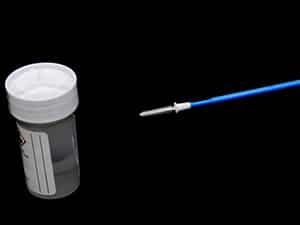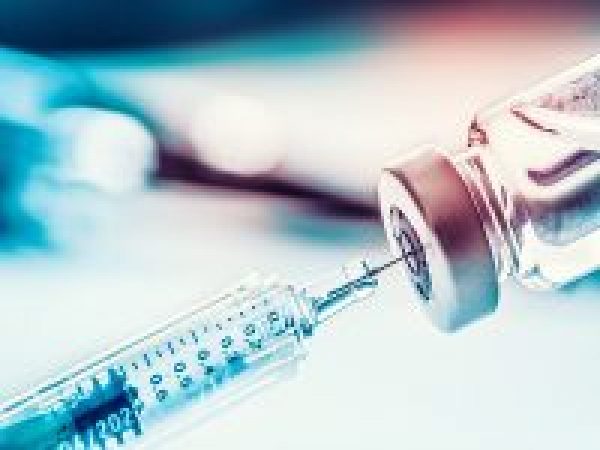Self-screening for Cancer: Home Sweet Home
Will the comfort and convenience of the home soon become the setting for more cancer self-screening? Currently, only at-home colorectal screening tests involving self-collecting stool samples are approved by the U.S. Food and Drug Administration (FDA), but some recent announcements could lead the way to more at-home tests.
In May 2024, the FDA announced three updates on screening options for cervical cancer. The Teal Wand, a device that allows individuals to collect their own vaginal sample at home that would then be shipped to a lab to test for human papillomavirus (HPV)—which is responsible for most cases of cervical cancer—was granted a breakthrough device designation. This means that while this device is not yet approved for the market, it will receive priority review once final data from the SELF-CERV trial evaluating its effectiveness is ready.

The other announcements involved expanded indications for two cervical cancer screening tests—the Onclarity HPV Assay and the cobas HPV Test—that were previously approved for use by a clinician in a health care setting. Now, an individual can perform their own vaginal swab, but only in a health care setting when it is determined it is not possible for a clinician to collect the specimen. For example, if an individual needs to be screened but cannot see or does not have access to an obstetrician/gynecologist, then they may be able to collect their own sample in an urgent care facility, pharmacy, mobile clinic, or their primary care physician’s office.
Both tests are also part of the National Cancer Institute’s “Last Mile” Initiative, which includes a clinical trial program called SHIP (Self-collection for HPV testing to Improve Cervical Cancer Prevention). Featuring clinical trial sites across the United States, this program is evaluating the effectiveness of self-collection in a home setting, which could lead to approved home use. Previous studies conducted in this area, including one published in Cancer Prevention Research, have found that self-collected vaginal samples and clinician-collected cervical tests have had comparable results.
How Impactful Can At-home Cervical Cancer Self-Screening Be?
The United States is on track to eliminate cervical cancer as a public health problem within the next two to three decades, according to a study published in The Lancet Public Health. This is in part thanks to the HPV vaccine that makes cervical cancer nearly 90% preventable. But that could be accelerated by 10 to 13 years if screening were to be scaled up by around 90%, which would potentially avert an estimated 150,000 cases of cervical cancer and about 25,000 deaths related to cervical cancer, based on the findings.
However, between 2005 and 2019, the number of women who failed to keep up to date with screenings rose from 14.4% to 23%. The U.S. Preventive Services Task Force currently recommends that women 21 to 29 years old receive a Pap smear every three years and that women 30 to 65 years old receive a Pap smear every three years, a high-risk HPV test every five years, or co-testing with both methods every five years to screen for cervical cancer.
Previous studies have found that incidences of cervical cancer are higher among women in low-income counties. At the American Association for Cancer Research (AACR) Annual Meeting 2024, Trisha L. Amboree, PhD, MPH, of the University of Texas MD Anderson Cancer Center, presented findings from the PRESTIS trial that examined whether the use of mailed at-home HPV test kits—which are commercially available but not FDA-approved—could increase screening among socioeconomically disadvantaged populations in safety net health settings. They found that mailed at-home tests helped screening rates increase 2.7-fold compared to in-clinic screening. Further, if telephone-based patient navigation services were included along with the mailed kits, then screening rates increased over 3.3-fold.
“Self-sampling for high-risk HPV testing has the potential to dramatically improve participation in cervical cancer screening and underserved populations in the United States,” Amboree said.
At-home Blood Tests
Meanwhile, the United Kingdom also announced the approval of a new device in May 2024 that could change at-home care for cancer patients. The blood count analyzer Liberty allows cancer patients to take a finger prick of blood, put the sample in the device, and have the results sent to their health care providers without having to leave their home. This way, a patient’s care team can more easily monitor health indicators such as hemoglobin levels and total white blood cell count.
It could also make things easier on patients and limit any “time toxicity,” a phrase coined to describe the significant time patients spend traveling to, waiting for, and attending frequent appointments that take away from the moments they could spend living their lives.
The device’s approval was based on a home study with 22 participants, in addition to regulatory trials involving 470 participants. Given the small nature of the trial, the device will initially be made available to patients to take home from 12 National Health Service locations in the United Kingdom. Additional trials will be conducted to further validate its effectiveness and clinical utility before use is expanded.
Separately, the manufacturer of Liberty plans to eventually submit the device for FDA approval in the United States.



